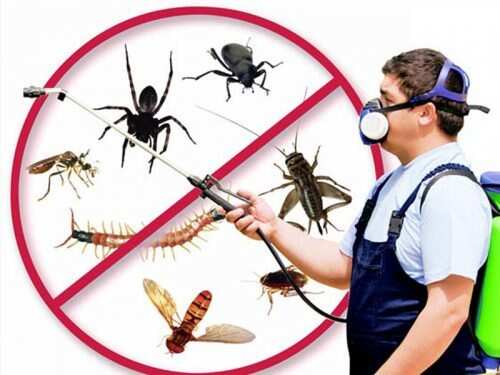How Eco Bed Bug Exterminators Dc can Save You Time, Stress, and Money.
The Eco Bed Bug Exterminators Dc Statements
Table of ContentsNot known Facts About Eco Bed Bug Exterminators DcEco Bed Bug Exterminators Dc Things To Know Before You Get ThisFacts About Eco Bed Bug Exterminators Dc UncoveredThe 6-Minute Rule for Eco Bed Bug Exterminators DcThe Best Strategy To Use For Eco Bed Bug Exterminators Dc
Due to the fact that chemicals are hazardous, they are likewise potentially unsafe to people, pets, various other organisms, and the environment. Therefore, people who utilize pesticides or routinely can be found in call with them need to recognize the family member poisoning, prospective wellness impacts, and preventative actions to lower direct exposure to the products they use. Hazard, or threat, of making use of chemicals is the possibility for injury, or the level of threat associated with using a pesticide under an offered set of problems.
Nonetheless, applicators can decrease or nearly remove direct exposure-- and hence lower danger-- by complying with the tag directions, using personal safety clothing and devices (PPE), and handling the chemical appropriately. As an example, even more than 95 percent of all pesticide direct exposures come from dermal direct exposure, primarily to the hands and lower arms. By wearing a pair of unlined, chemical-resistant handwear covers, this kind of direct exposure can be almost eliminated.
The harmful effects that occur from a solitary exposure by any path of entry are described "intense results." The 4 courses of exposure are dermal (skin), inhalation (lungs), oral (mouth), and the eyes. Acute poisoning is figured out by analyzing the facial poisoning, breathing toxicity, and dental toxicity of test animals.
The Basic Principles Of Eco Bed Bug Exterminators Dc
Acute toxicity is measured as the quantity or focus of a toxicant-- the a.i.-- called for to eliminate half of the pets in an examination population. This action is generally expressed as the LD50 (lethal dose 50) or the LC50 (lethal concentration 50). Furthermore, the LD50 and LC50 worths are based upon a solitary dose and are taped in milligrams of pesticide per kg of body weight (mg/kg) of the examination animal or partially per million (ppm).
The lower the LD50 or LC50 value of a pesticide item, the greater its toxicity to people and pets. Chemicals with a high LD50 are the least harmful to human beings if used according to the instructions on the item label. The persistent toxicity of a chemical is identified by subjecting examination animals to lasting direct exposure to the active component.
The chronic poisoning of a pesticide is much more hard than acute poisoning to identify through lab analysis. Products are classified on the basis of their loved one severe toxicity (their LD50 or LC50 values). Pesticides that are identified as very harmful (Poisoning Category I) on the basis of either dental, dermal, or inhalation poisoning should have the signal words threat and POISON published in red with a skull and crossbones sign prominently presented on the front panel of the plan label.
The acute (solitary dose) oral LD50 for chemical items in this team varies from a trace amount to 50 mg/kg. For instance, exposure of a few decreases of a product taken by mouth might be deadly to a 150-pound person. Some chemical products have simply the signal word DANGER, which informs you nothing concerning the severe toxicity, just that the item can trigger extreme eye damages or severe skin inflammation
The Only Guide for Eco Bed Bug Exterminators Dc
In this classification, the intense dental LD50 ranges from 50 to 500 mg/kg. A tsp to an ounce of this product could be deadly to a 150-pound individual (bed bug spray). Chemical products identified as either somewhat harmful or reasonably safe (Poisoning Classifications III and IV) are called for to have the signal word care on the pesticide label

All chemical toxicity values, including the LD50, can be located on the product's Material Safety and security Information Sheet (MSDS) - bed bug heater rentals. Pesticide labels and MSDS can be gotten from stores or makes. Furthermore, most products also have info that can be discovered online. The symptoms of pesticide poisoning can vary from a light skin inflammation to coma or even death.
People also differ in their level of sensitivity to my site various degrees of these chemicals. Some individuals may show no response to a direct exposure that might trigger extreme illness in others (bed bug treatment). As a result of prospective health problems, chemical individuals and handlers must recognize the common symptoms and signs of chemical poisoning. The impacts, or signs and symptoms, of chemical poisoning can be generally specified as either topical or systemic.
The Single Strategy To Use For Eco Bed Bug Exterminators Dc
Dermatitis, or inflammation of the skin, is accepted as the most typically reported topical result linked with pesticide exposure. Signs of dermatitis variety from reddening of the skin to breakouts and/or sores. Some people tend to cough, hiss, or sneeze when exposed to pesticide sprays. Some individuals react to the strong odor and irritating impacts of oil distillates made use of as providers in chemical items.
This sign normally subsides within a couple of mins after an individual is gotten rid of from the exposure to the irritant. Nonetheless, a reaction to a chemical item that creates someone not just to sneeze and cough but additionally to create extreme acute respiratory symptoms is extra most likely to be a real hypersensitivity or allergy.
Systemic results are fairly different from topical impacts. They usually occur far from the original factor of call as an outcome of the pesticide being taken in into and distributed throughout the body. Systemic impacts typically consist of queasiness, throwing up, fatigue, migraine, and digestive tract problems. In sophisticated poisoning cases, the person might experience changes in heart rate, problem breathing, convulsions, and coma, which might cause death.